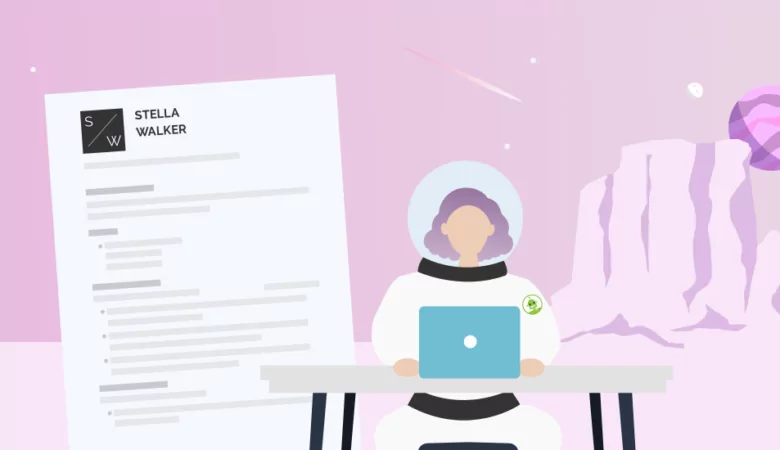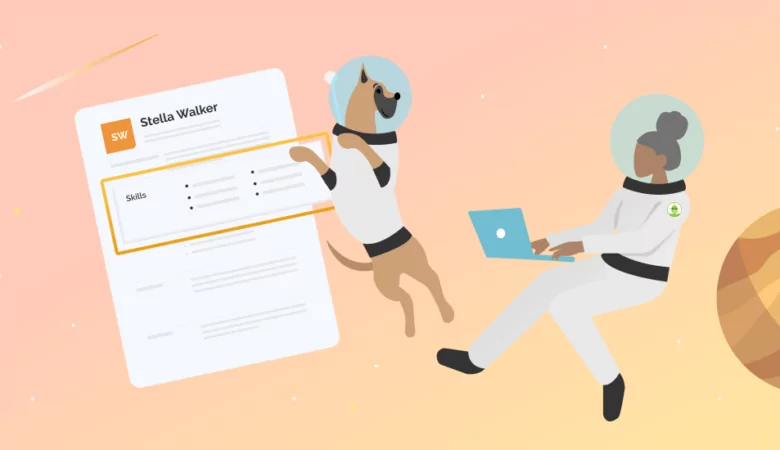Use your resume cover page to get the attention of hiring managers and get an interview for any job. Four easy examples from ResumeNerd help you to write your cover page in minutes.

Writing a Resume Cover Page to Get the Job You Want
Learn to Write a Resume Cover Page In Minutes
A cover page is just another term for a cover letter. Job seekers often overlook the cover letter when it comes to a job application. But, including a great cover page along with your resume can increase your chances of getting hired. A cover page or cover letter is easy to create once you have your resume.

This resume cover page guide will show you:
- How a cover page or cover letter can help you get the job
- What your cover letter should include
- Tips to write a cover letter for a new job in minutes
How a Cover Page Can Help You Get Hired
A cover page or cover letter is a one-page document that job seekers can include with their application. Your cover page is the first impression you will have on recruiters who will receive your job application package. Often busy recruiters and hiring managers will decide to read your resume or not based on your cover page. A cover page can also make a difference if the recruiters receive a large number of candidates for a position. If you have the same qualifications as other candidates, a cover letter can give you the advantage you need to stand out.
Job seekers often wonder if they need to include a cover letter in addition to a resume. For the best results, you should always include both. The only time you should not include a cover page or cover letter is when the job description specifically states not to. A resume is a document that is also often one page. A resume is a professional document detailing your relevant work experience, skills, and certifications. The cover letter will give you a chance to introduce yourself to recruiters in a more personable way, and provide further insight on your top skills and experiences.
What Your Cover Page or Cover Letter Should Include
- Contact information
- Professional greeting/salutation and the full name of the hiring manager
- Opening paragraph/introduction
- Work experience
- Explanation of any career change or employment gap
- Competencies and transferable skills
- Closing paragraph/call to action
If you get stuck, you can always use a cover letter template or cover letter samples for inspiration.
How to Write a Great Cover Page in Four Steps
-
How to begin your cover page.
Place your contact information in the header of your cover page. Date the letter, and begin with a professional salutation and the hiring manager’s full name if you have it. Including the name of a person makes it more likely that the letter will be read, rather than addressing it “To whom it may concern.”
John Doe
[Address] [Phone] [Email] [Professional Profile Link][Date]
[Hiring Manager Name]
[Company and address]
[Email]
[Phone][Dear Mr. or Ms. Hiring Manager’s Name,]
-
Write your first paragraph.
Begin your first paragraph with a hook to get the attention of the hiring manager. Include recent highlights of your career or other memorable information. Show the hiring manager why you are the best candidate for the role.
-
Fill in the body of the cover letter using information from the job posting.
Refer to the job posting to find keywords, skills, and qualities required for the job. Fill in the body of your cover letter with your achievements, skills, and qualities that match the desired traits for the role. Using keywords from the job posting (e.g., particular skills and requirements the job is looking for) will ensure that your potential employer will see that you are the right person for the job, even if they quickly scan your letter. It can also help your resume get through an applicant tracking system (ATS). An ATS is a computer system that will scan your resume based on keywords. You can use bullet points to note your key skills or relevant tasks performed at your previous job.
-
Include a call to action in your closing paragraph.
Your closing paragraph should express your gratitude to your potential employer for their time. Then, invite them to call you for an interview or follow up phone call. This call to action shows your enthusiasm for the opportunity to work.
FAQ: Resume Cover Page
Both sets of contact information should be included. You should list your:
-
Full name
-
Phone number
-
Email address
-
Physical address
-
Social media such as LinkedIn
Your information can be placed in the header of your cover letter, or on the side of the page. The hiring manager’s address and email should be placed below the date and above the greeting on the left hand side of the page.
While you can use cover letter examples to get inspiration, you should not directly copy any example. For one thing, it’s important to tailor your cover letter for the specific job you’re applying to. In addition, if your cover letter is scanned by an ATS it may be discarded if it is plagiarized. Some job seekers may use false cover letters or resumes when applying to jobs, and the hiring manager may be wary if your cover letter is not original. But, you can use a cover letter template or tips to quickly and easily create your own cover letter.
Yes, like your resume, your cover page should be tailored specifically for each position you apply to. Use information from the job posting to adjust your cover letter, and show off experiences and skills that matter to the employer.The hiring manager can often tell if they are reading a generic cover letter or one written specifically for the position. Make the extra effort to leave a lasting impression on your potential employer.








